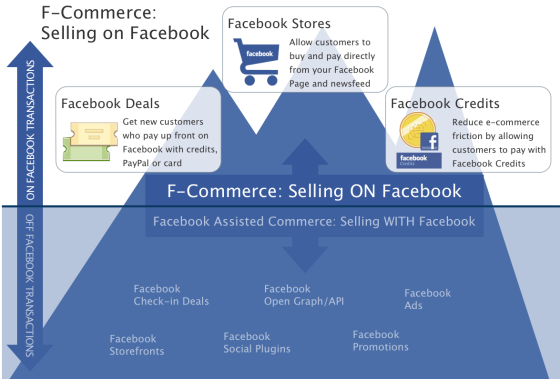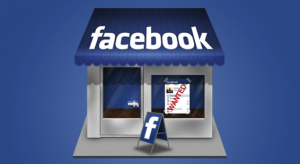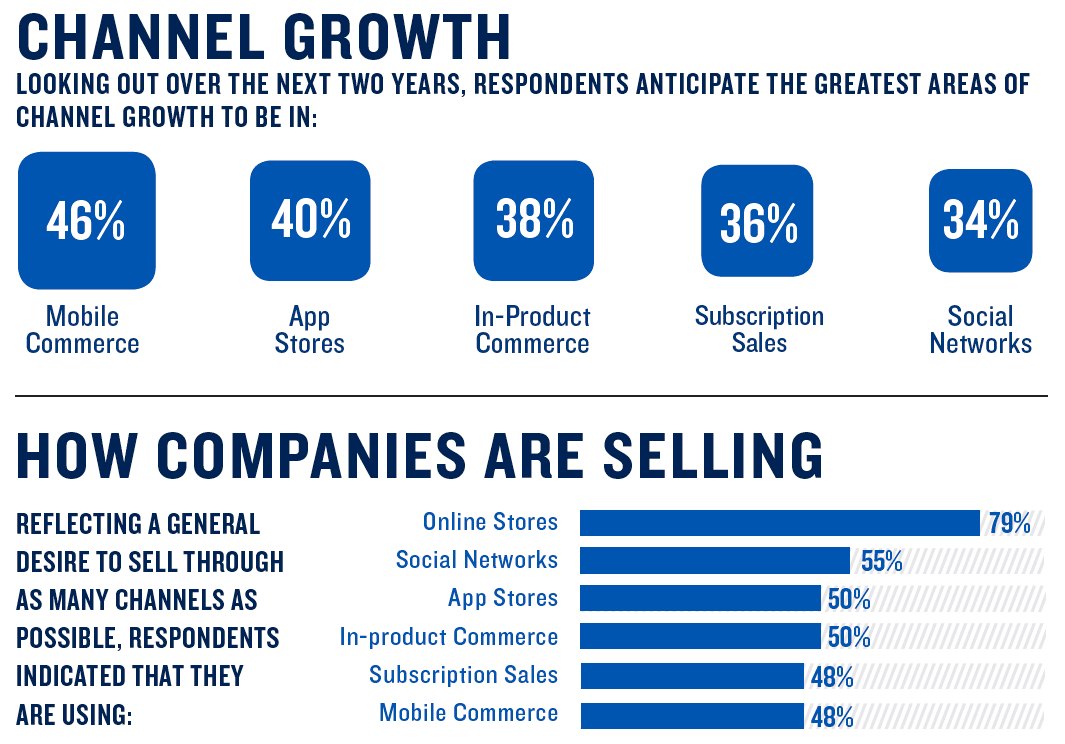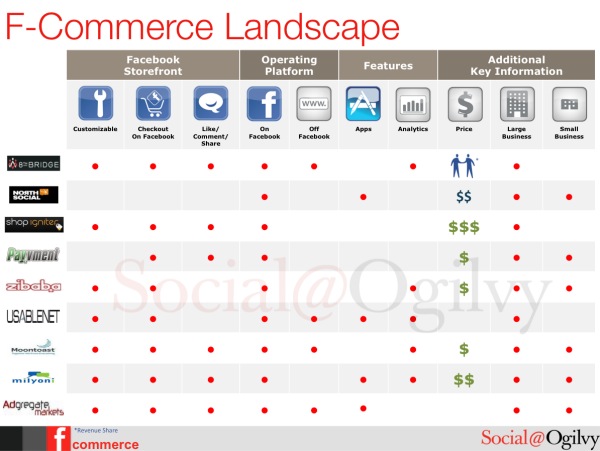Back in 2009, the business 1-800 Flowers opened the first Facebook store ever. By doing so, they spawned an entire industry of F-commerce which promised to revolutionize the way businesses sell and consumers buy.
Big Retailers Running from F-Commerce

Now, barely 3 years later, the glittery promises of F-commerce have lost their luster as major retailers close their Facebook stores. As a Bloomberg report pointed out, big names like JC Penny, Nordstrom, and Gap all opened and closed Facebook stores in the past year.
These big retailers have realized that Facebook is not effective as a shopping platform for their businesses as they hoped. Instead they are using social media for what it was intended for: socializing. As a marketing platform, this social factor is very effective, allowing customers to easily share their favorite products and promote businesses they like.
I suspect that some of these big retailers may have even inadvertently lost sales by using Facebook stores. When customers buy through Facebook instead of visiting a retailer’s website, they aren’t getting an optimized shopping experience. Cross promotions are incredibly difficult even in the best Facebook stores and customers would be more likely to fill their carts impulsively in the carefully – optimized shopping experience that a purely ecommerce website can offer. I would have loved to see comparisons of the average orders sizes for Facebook stores and their website store counterparts!
Small Businesses Embrace F-Commerce, and It’s Working
In an interview with Christian Taylor, the founder of the F-commerce solution Payvment, he says that he was surprised by how small businesses have taken to Facebook for ecommerce: 37% of small businesses only use Facebook for ecommerce!
For small businesses, running an online store purely through Facebook does have its many benefits. For starters, the costs are very low compared to the costs of running a traditional ecommerce store, such as web hosting, website design, and shopping cart fees. Since their customers are already interacting with them on Facebook, opening a Facebook store means that small businesses can run their entire operations from a single streamlined platform.
The downsides of F-commerce also aren’t as prominent for small businesses. For example, most F-commerce solutions don’t have advanced metrics or tracking systems in place – features which large retailers rely upon to shape their business strategy. Yet, many small businesses don’t need or use these advanced features.
But Is Relying on Facebook a Good Idea?
A recent New York Times article about Facebook storestells numerous uplifting stories of small businesses which have succeeded with F-commerce. Ms. Miller of Got What it Cakes built her one-person business from Facebook and generated $40,000 in revenue by the end of her second year. Artist Patrick Skoff sells 90% of his paintings on Facebook; Ashley Gall of Meli Jewelry makes 15% of her sales through Facebook…
For businesses like Ms. Miller’s Got What It Cakes, Facebook makes sense as an ecommerce platform. Each order is highly personalized, thus making the social aspects of Facebook work with ecommerce. But, for other small businesses, I wonder if it is really such a good idea to rely on F-commerce so much. Without custom app development (which costs around the lines of $20k), Facebook storefronts tend to be generic looking and difficult to navigate. They are hardly ideal for maximizing order size and preventing shopping cart abandonment.
And, as Miller herself notes, not everyone is on Facebook – which is why she also maintains a website.
 You don’t need a website to sell to your fans on Facebook. Apps now let small business owners quickly and easily turn their Facebook pages into ecommerce stores where transactions can be completed without requiring fans to ever leave Facebook.
You don’t need a website to sell to your fans on Facebook. Apps now let small business owners quickly and easily turn their Facebook pages into ecommerce stores where transactions can be completed without requiring fans to ever leave Facebook.

